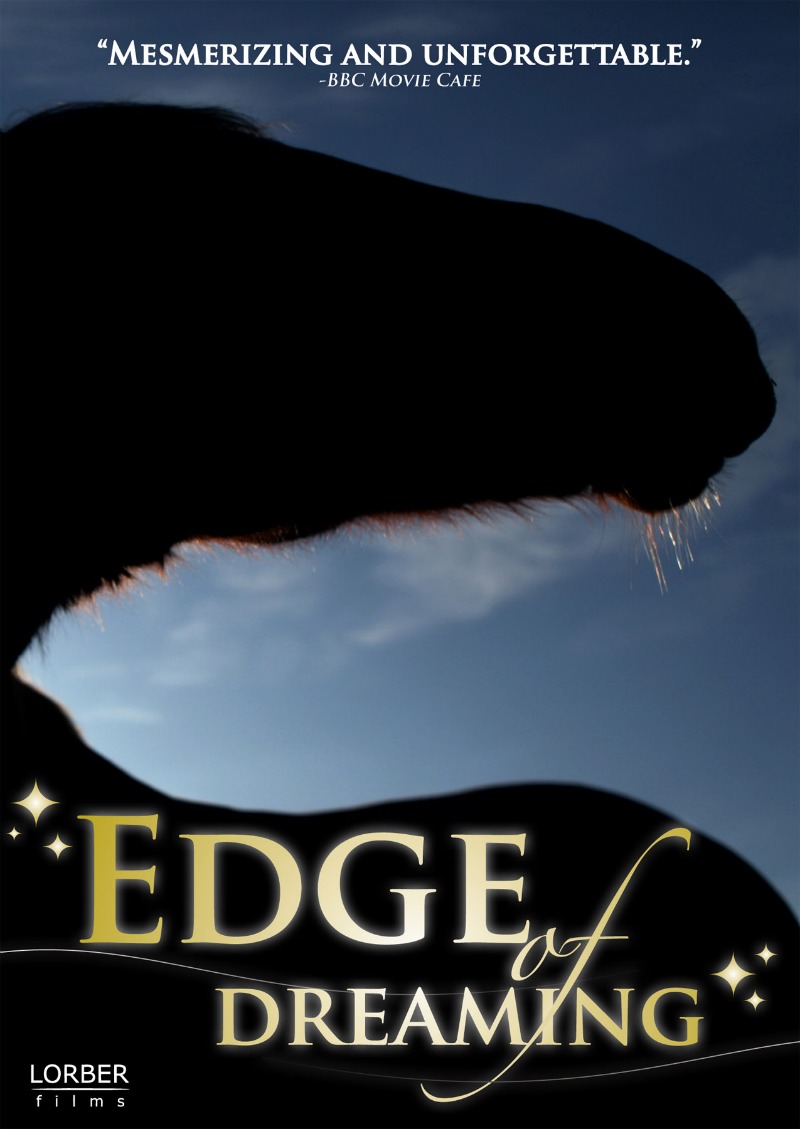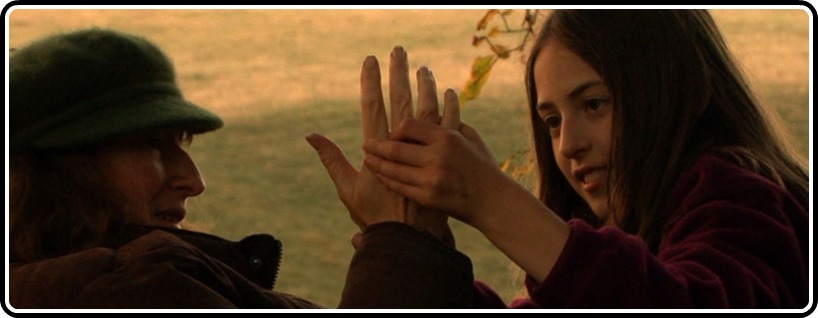How much stock do you put into your dreams? How much do you believe our reality impacts them? Do our dreams affect our reality and if so, what is the extent of their power? Amy Hardie thought she knew her beliefs. She is a rational person, working in science for both research and documentary filmmaking purposes. In the documentary Edge of Dreaming, Hardie is forced to address these questions due to a series of frightening dreams that may or may not be foretelling. The film takes us through her forty-eighth year, discarding the informational conventions of the medium with sporadic success. This inventive and deeply personal work represents Hardie’s subjective thought process through a time where thoughts of dying and dreaming overwhelm her senses.
Amy Hardie lives in a beautiful secluded home located in Scotland with a husband and three kids. She is not accustomed to remembering her dreams. One night, she has a dream that her horse George dies. Startled, she wakes up and walks outside to find that the horse has died of a heart attack. Amy thinks the incident is a disturbing coincidence but nothing more. Sometime after, she has another dream. In this one, her deceased ex-partner Arthur appears and regrettably tells her that she will die when she is forty-eight; at the time of the dream, she is forty-seven. She wants to be rational about the dreams but it is increasingly impossible, especially when she becomes sick and discovers that her lungs are only working at sixty percent capacity. To work through this tough year, Amy keeps her camera in hand constantly. She films interactions with her family and shoots picaresque imagery that represents her appreciation and heightened sense of everything around her. She begins to do research on dreams by both reading her husband’s books on the subject and by conducting her own research with neuroscientists, biologists and a shaman.
Hardie’s personal approach is a welcome change to the standard documentary, yet the film falters a bit because of this choice. The goal is not to teach the audience much of anything about dreaming. There are interviews in the film but very few and they take up little screen time. The point is to capture what the filmmaker went through that year. The way she sees things are shown through her camera, which she always has and thus the images are being captured during the year and not after. She took all of her footage, assembled it, added her voiceover narration, and presents us with a representation of her emotional dilemma. She takes her time giving us information, resulting in a languid and atmospheric pace. She smartly realizes that a film dealing with death and dreaming as subject matter, as well as keeping her personal struggle involved, is too ambitious to tackle and would have been scattered. Choosing the personal route certainly helps Hardie in that her one objective is consistent throughout, with no pit stops along the way.
The footage and narration come together very much like a narrative. Looking at the film as such, it is hard to deny that all of it feels a bit thin. While I am glad she took the approach she did, and I am convinced it works in her favor, after a while it stops being engaging. The interviews left me wanting to immediately find more information about dreaming as well as a waning interest in Hardie’s struggle as she posits profound questions on the nature and power of dreaming. It could be said the film does its job if it leaves one wanting to find out more about dreams. At the same time, it becomes difficult to stay engaged in an inconsistent work that feels stretched out to its maximum potential, despite Hardie’s obvious skill at showing us her ordeal.
On the DVD are special features which I would highly recommend checking out if you are looking for more interviews. Not only is there an interview with Amy Hardie, but more importantly there are many deleted research interviews that provide a variety of perspectives on death and dreaming. They are more than worth checking out. While Edge of Dreaming directly transfers Hardie’s experience to the viewer in a way rarely seen in a documentary, its intermittent success makes this a somewhat hesitant recommendation. The film is not as profound as it wants to be. It is also a little too conscious of the way it has been constructed as a purposeful narrative. Amy’s journey is certainly felt by the audience; the question of how interesting that journey is throughout, will vary with each viewer.





![Bergman Island (The Criterion Collection) [Blu-ray]](https://criterioncast.com/wp-content/uploads/2022/11/bergman-island-the-criterion-collection-blu-ray-400x496.jpg)
![This Is Not a Burial, It’s a Resurrection (The Criterion Collection) [Blu-ray]](https://criterioncast.com/wp-content/uploads/2022/11/this-is-not-a-burial-its-a-resurrection-the-criterion-collection-blu-ray-400x496.jpg)
![Lars von Trier's Europe Trilogy (The Criterion Collection) [The Element of Crime/Epidemic/Europa] [Blu-ray]](https://criterioncast.com/wp-content/uploads/2022/11/lars-von-triers-europe-trilogy-the-criterion-collection-the-element-of-400x496.jpg)
![Imitation of Life (The Criterion Collection) [Blu-ray]](https://criterioncast.com/wp-content/uploads/2022/11/imitation-of-life-the-criterion-collection-blu-ray-400x496.jpg)
![The Adventures of Baron Munchausen (The Criterion Collection) [4K UHD]](https://criterioncast.com/wp-content/uploads/2022/11/the-adventures-of-baron-munchausen-the-criterion-collection-4k-uhd-400x496.jpg)
![Cooley High [Criterion Collection] [Blu-ray] [1975]](https://criterioncast.com/wp-content/uploads/2022/11/cooley-high-criterion-collection-blu-ray-1975-400x496.jpg)
1 comment